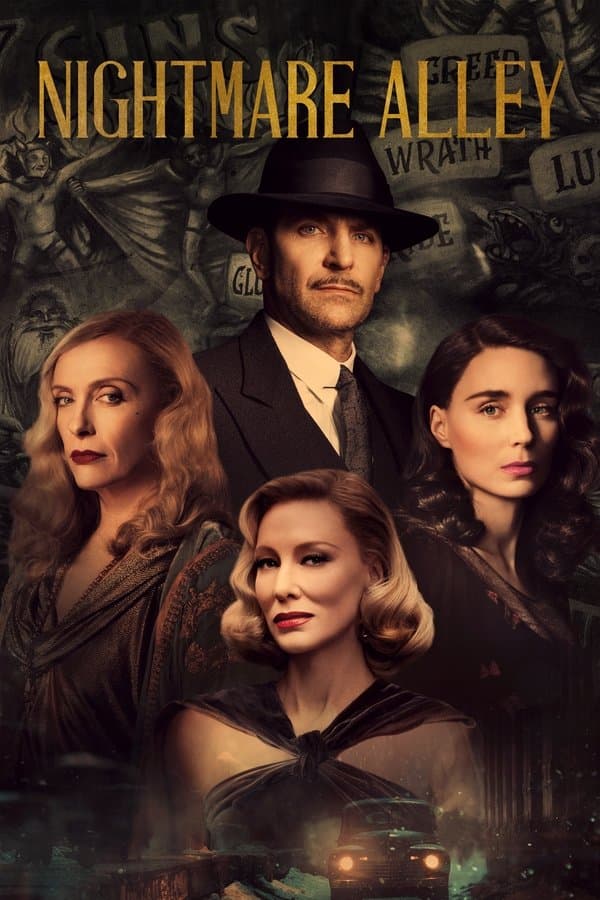
Nightmare Alley
2021 • Crime, Drama, Thriller • R
An ambitious carnival man with a talent for manipulating people with a few well-chosen words hooks up with a female psychologist who is even more dangerous than he is.
Runtime: 2h 31m
Why you should read the novel
William Lindsay Gresham’s original novel, Nightmare Alley, offers a richly layered exploration of ambition, deceit, and the shadows lurking within the human psyche. The book immerses readers in carnival life, where fortunes turn on a dime, and no secret stays buried for long. Using evocative language and deeply drawn characters, Gresham pulls readers into a twisted world that lingers long after the last page.
Reading the novel allows you to savor the subtleties of character development and motivation often condensed or altered for the screen. The internal struggles and psychological complexities of Stanton Carlisle, the protagonist, are presented with greater depth, making his transformation all the more compelling and tragic.
Furthermore, Gresham’s writing provides rich historical context and detail that enhances the gritty, desperate atmosphere of Depression-era America—a context sometimes streamlined or stylized in film adaptations. By choosing the novel, you access a raw, unvarnished look at ambition, manipulation, and downfall that only prose can fully capture.
Adaptation differences
One of the key differences between Guillermo del Toro’s 2021 adaptation of Nightmare Alley and William Lindsay Gresham's novel is the treatment of Stanton Carlisle’s background and internal motivations. The film, while visually elaborate, chooses to streamline many of Stanton's psychological conflicts, emphasizing external actions over internal thought processes. In contrast, the novel dives deep into Stanton’s psyche, presenting his trauma, insecurity, and misguided ambitions with nuance and complexity.
Another notable variation is the portrayal of certain supporting characters and their relationships with Stanton. While the movie often sharpens or alters the arcs of characters like Molly and Lilith, the novel provides richer backgrounds and more ambiguous motives. Gresham’s original characters are more morally gray, their decisions influenced by subtle psychological drives rather than clear-cut cinematic archetypes.
The novel’s pacing is also vastly different from the film’s. Readers experience the slow deterioration of Stanton Carlisle’s moral compass and psychological stability over a greater number of episodes and interactions. The book’s structure allows for a measured build-up, whereas the film—restricted by runtime—combines and abbreviates plot elements for narrative efficiency, sometimes sacrificing depth for drama.
Finally, the endings of the book and movie diverge in tone and subtlety. While both are bleak, Gresham’s conclusion is even more uncompromising and ambiguous, leaving readers haunted by Stanton’s fate and the cyclical nature of his downfall. The film, though faithful in many ways, imposes a more explicit resolution, guiding viewers to a definitive sense of tragedy absent from the book’s haunting final pages.
Nightmare Alley inspired from
Nightmare Alley
by William Lindsay Gresham








